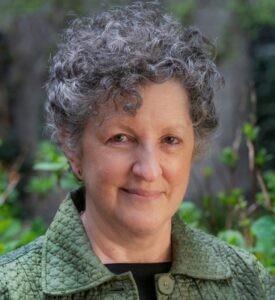
What Do the Dead Know?
May 3, 2024 By Jonathan Boyarin | Commentary | Aharei Mot
This week’s Torah portion begins with the words “after the death,” referring to the death of Aaron’s sons Nadab and Abihu. I appreciate the chance to contribute this week’s commentary, since I’m currently teaching a course titled “Death, Dying, and the Dead” at JTS. Much of the course is about Jewish death rituals, but I also aim to convince my students that Jewishness per se is inconceivable without some notion of the continuing presence of the dead in the world of the living. The tradition for the most part seems to take this continued presence for granted, though questions arose about exactly how it manifests.
Read More
Making God Holy
Apr 28, 2023 By Amram Altzman | Commentary | Aharei Mot | Kedoshim
Parashat Kedoshim, the second of the two parashiyot that we read this week, ends just as it begins: with an imperative for us, the Children of Israel, to be holy. Our parashah opens with, “קדשים תהיו/You shall be holy,” and the penultimate verse tells us that, “והייתם לי קדשים/You shall be holy to Me, for I God am holy, and I have set you apart from other peoples to be Mine” (Lev. 20:26). Although almost identical, our parashahends with the idea that we are not just holy in general, but are specifically designed as holy to God. How, then, are we supposed to not just be holy, but holy to God?
Read MoreYom Kippur Torah Reading
By The Jewish Theological Seminary | Collected Resources | Aharei Mot | Yom Kippur
The Yom Kippur Torah portion is taken from Aharei Mot. In the morning service, the reading (Leviticus 16:1-34) describes the priestly duties on Yom Kippur and the ritual of the scapegoat. While the afternoon (18:1-30) describes forbidden relationships and marriages. The Haftarah in the morning is from Isaiah 57:14-58:14 and highlights themes of repentance and fasting. During mincha, the book of Jonah is read.
Read More
Who is the Stranger?
Apr 29, 2022 By Linda S. Golding | Commentary | Aharei Mot
What a great invitation, I thought, to write a d’var Torah on Aharei Mot! The opening verses that include “Tell your brother Aaron that he is not to come at will into the Shrine behind the curtain . . . lest he die” came immediately to mind. The directive to be mindful and thoughtful when entering God’s presence and the presence of others certainly aligns with a chaplain’s way of being. When entering a hospital room, for example, I know that the Shekhinah, God’s healing presence, is at the head of the patient’s bed. Holiness is already in the room, and I must be prepared to pay attention.
Read More
The Palace of Torah Expanded: 15 Years Later
Apr 23, 2021 By Daniel Nevins | Commentary | Aharei Mot | Kedoshim
For many modern readers, engaging with Torah presents a paradox. Biblical and rabbinic voices reaching us from the distant past are like starlight emitted millennia ago—brilliant and often shockingly current, but also artifacts from light sources that may have dimmed or even expired. This paradox can be constructive, drawing modern readers out of our own cultural assumptions, challenging us to notice wonders that we might otherwise miss. The Torah’s poetry, its stirring demands for justice, and its vast system of devotional rites prime us for faith and sanctity. And when we encounter a Torah text that rings false or hurtful, we may use that encounter to clarify our own understanding, to articulate our community’s sacred values.
Read More
Holiness Through Restraint
May 1, 2020 By Joshua Rabin | Commentary | Aharei Mot | Kedoshim
I am a rabbi who works with teenagers, and you cannot talk to adults about teenagers without the conversation quickly focusing on smartphones and social media. And it quickly turns depressing.
Read More
The Great Escape
May 3, 2019 By Marc Gary | Commentary | Aharei Mot | Yom Kippur
Last year, the eminent Bible scholar Robert Alter completed a project that only a handful of people have ever even attempted: a brand-new translation of and commentary on the entire Tanakh (Hebrew Bible). The work comprises more than 3,000 pages and took him almost 25 years to complete. Professor Alter is rightfully the subject of much admiration for this outstanding achievement, but one of his predecessors did not fare as well.
Read More
How to Be Holy
Apr 27, 2018 By Raymond Scheindlin | Commentary | Aharei Mot | Kedoshim
This week, we read two parashiyot from Leviticus: Aharei Mot and Kedoshim. Taken together, they cover five clearly defined topics. Aharei Mot deals with the rituals of the high priest on Yom Kippur; regulations governing the slaughter of animals for food and sacrifice; and the prohibition of various sexual relations, especially incest. This last subject is resumed at the end of Kedoshim. Between the two discussions of sexual relations is the famous Chapter 19, which opens Kedoshim.
Read More


